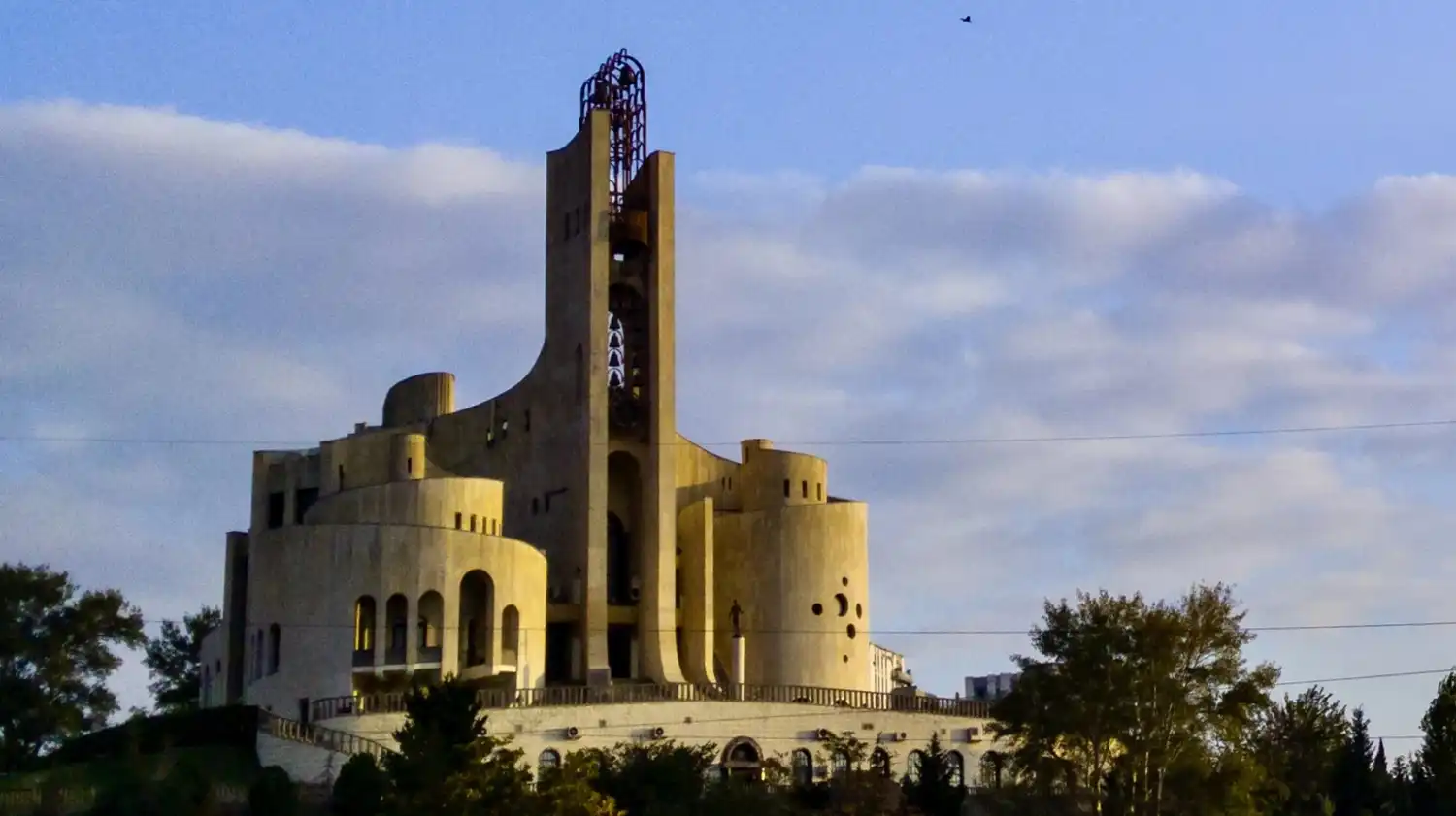What Makes Brutalist Architecture So Captivating
Brutalist architecture stands as one of the most polarizing yet fascinating movements in modern construction. These massive concrete structures, characterized by their raw materials and bold geometric forms, emerged in the mid-20th century as architects sought to create functional spaces that made powerful visual statements. The style’s emphasis on monumental scale and uncompromising design continues to spark intense debates among architecture enthusiasts worldwide.
Soviet Brutalism: A Bold Architectural Legacy
Soviet-era brutalist buildings represent some of the most striking examples of this architectural movement. These structures were designed not just as functional spaces, but as symbols of socialist ideals and technological progress. From towering research facilities to imposing government buildings, Soviet brutalist architecture showcases the era’s ambitious vision for the future.
Here are five remarkable buildings that perfectly capture the essence and power of Soviet brutalism.
1. Russian Academy of Sciences
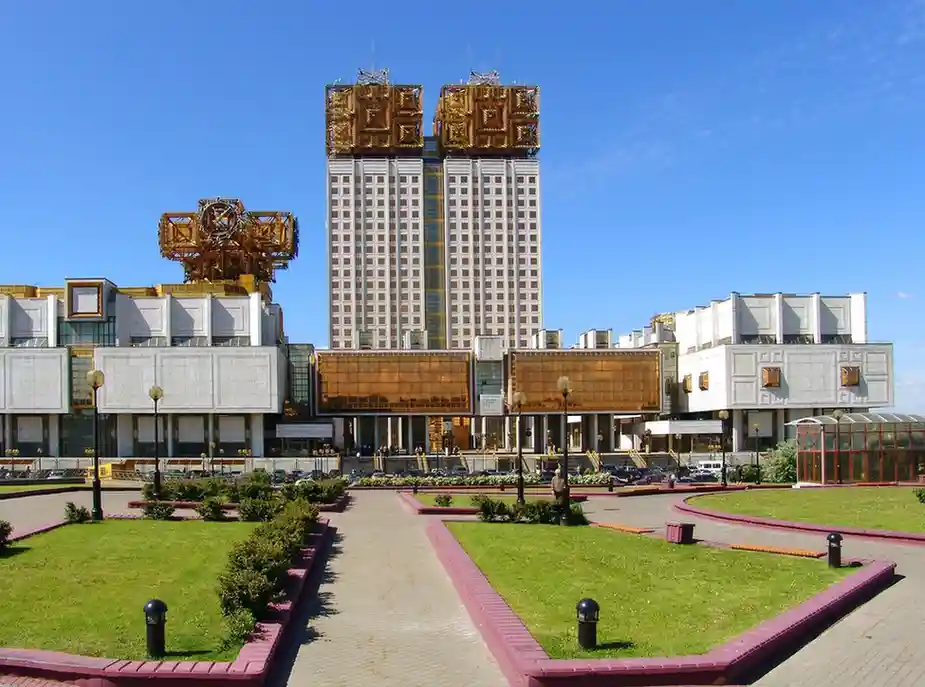
A Monument to Scientific Achievement
The Russian Academy of Sciences building in Moscow stands as a testament to the Soviet Union’s commitment to scientific advancement. This imposing structure, with its distinctive golden facade and monumental proportions, represents the perfect fusion of brutalist principles with symbolic grandeur.
Completed during the height of the Soviet era, this architectural marvel was designed to house the nation’s most prestigious research institution. The building’s massive scale and gleaming exterior communicate the importance placed on scientific progress in Soviet society.
Why This Building Commands Attention
The Russian Academy of Sciences offers visitors several remarkable features:
- Striking golden cladding that creates a dramatic contrast against Moscow’s skyline
- Imposing vertical design that emphasizes the building’s monumental character
- Symbol of intellectual power representing Soviet commitment to research and innovation
- Unique architectural details that blend brutalist principles with decorative elements
- Historical significance as a centerpiece of Soviet scientific infrastructure
2. House of the Soviets
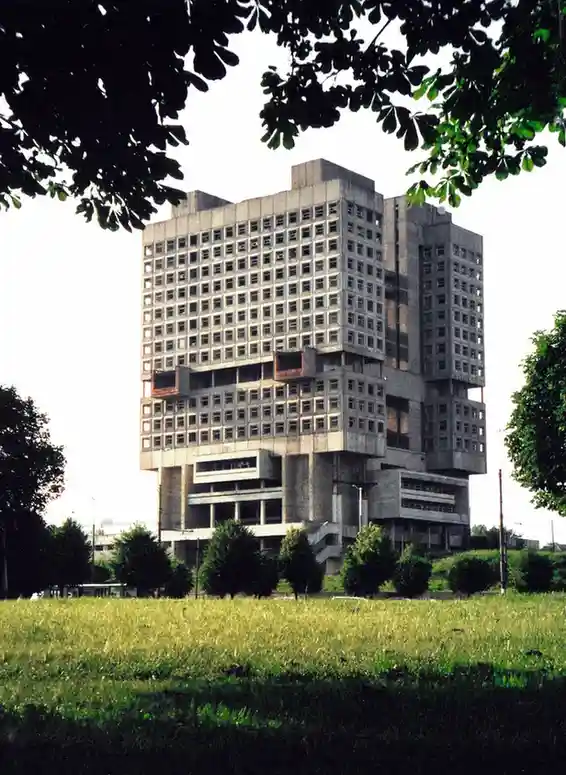
Unfinished Ambition in Concrete
The House of the Soviets in Kaliningrad tells a fascinating story of ambitious planning and changed circumstances. This massive concrete structure, originally intended as a symbol of Soviet administrative power, remains one of the most intriguing examples of brutalist architecture in Eastern Europe.
Never fully completed due to various political and economic factors, the building has become an unexpected landmark. Its raw concrete surfaces and imposing geometric form perfectly embody the bold vision that characterized Soviet-era construction projects.
What Makes This Structure Remarkable
Despite its unfinished state, the House of the Soviets offers unique architectural insights:
- Massive concrete construction showcasing brutalism’s emphasis on raw materials
- Geometric precision that demonstrates Soviet architectural planning principles
- Unfinished narrative that adds mysterious appeal to the structure
- Cultural significance as a symbol of changing political landscapes
- Photogenic qualities that attract architecture photographers from around the world
3. Hotel Salut
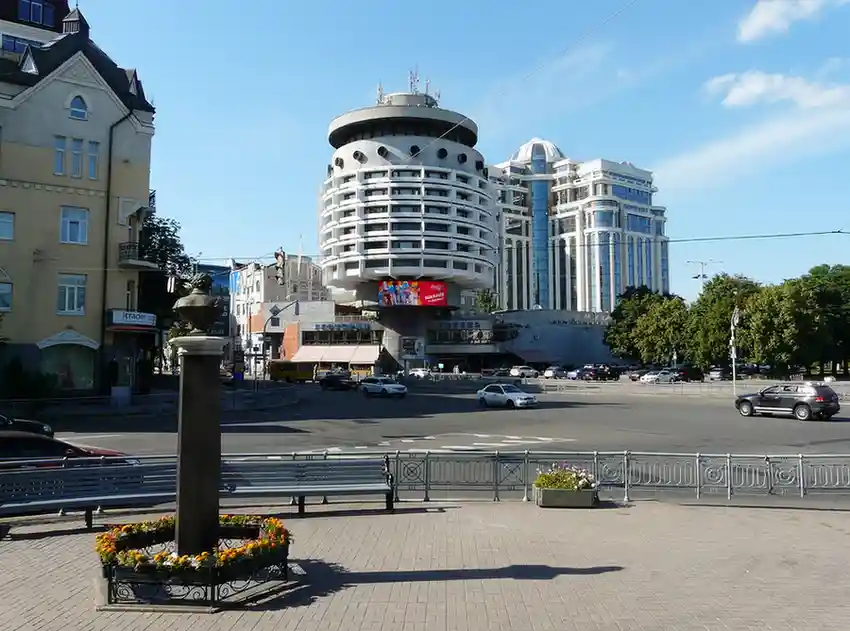
Space-Age Hospitality in Concrete
Hotel Salut in Kyiv represents one of the most futuristic examples of Soviet brutalist design. This cylindrical tower, with its distinctive mushroom-like profile, was conceived as a modern hospitality venue that would showcase Soviet technological prowess and design innovation.
The hotel’s unique circular structure and dramatic silhouette make it instantly recognizable on Kyiv’s skyline. Its space-age aesthetic perfectly captures the optimistic futurism that influenced Soviet architecture during the 1970s and 1980s.
Outstanding Features of This Architectural Gem
Hotel Salut continues to fascinate visitors with its distinctive characteristics:
- Cylindrical tower design that creates a striking vertical presence
- Futuristic aesthetic reflecting Soviet-era optimism about technological progress
- Unique structural engineering showcasing innovative construction techniques
- Interior design elements that complement the building’s bold exterior form
- Cultural landmark status as an icon of Kyiv’s architectural heritage
4. Georgian Ministry of Highways
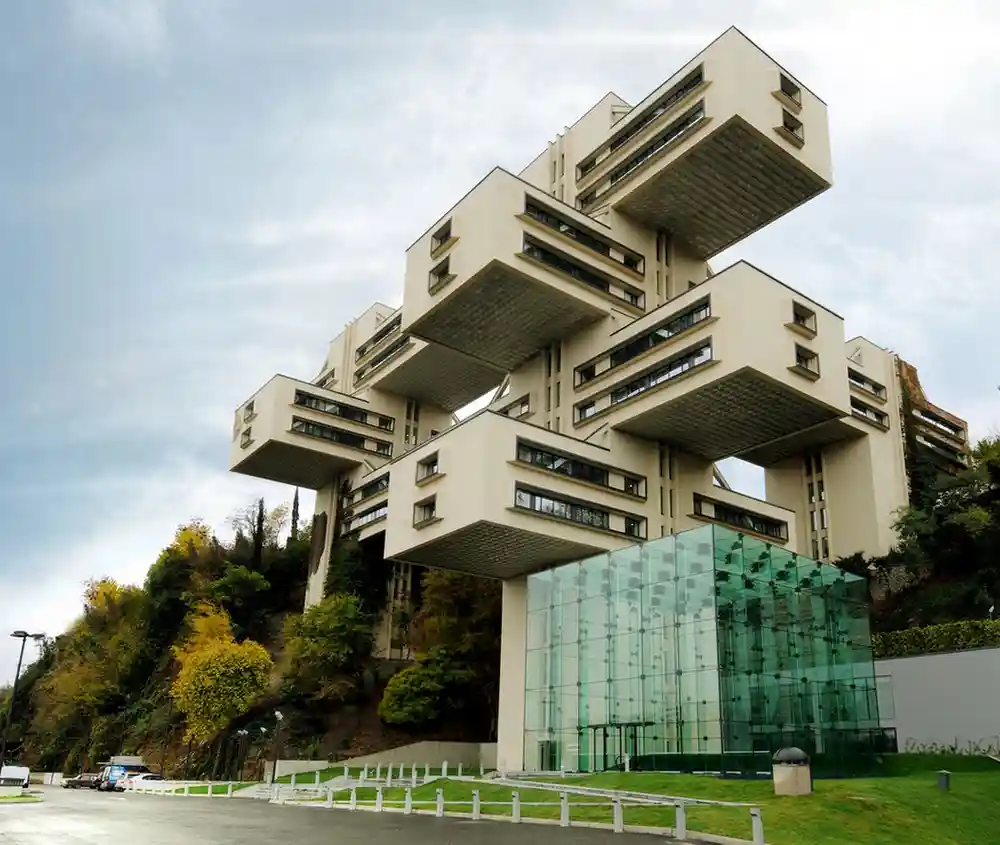
Dramatic Architecture for Infrastructure
The Georgian Ministry of Highways building in Tbilisi stands as one of the most visually dramatic examples of Soviet brutalism. This structure, with its cascading concrete forms and bold geometric composition, was designed to house the administrative functions of Georgia’s transportation infrastructure.
The building’s design reflects the mountainous landscape of Georgia while maintaining the monumental character typical of Soviet institutional architecture. Its stepped profile and massive concrete elements create a powerful presence that dominates the surrounding urban environment.
Exceptional Aspects of This Concrete Masterpiece
The Georgian Ministry of Highways building offers several noteworthy features:
- Cascading concrete design that echoes Georgia’s mountainous terrain
- Bold geometric forms showcasing brutalism’s emphasis on sculptural architecture
- Integration with landscape demonstrating thoughtful site planning
- Institutional symbolism representing Soviet administrative power and organization
- Photographic appeal making it a favorite subject for architectural documentation
5. Palace of Ceremonies
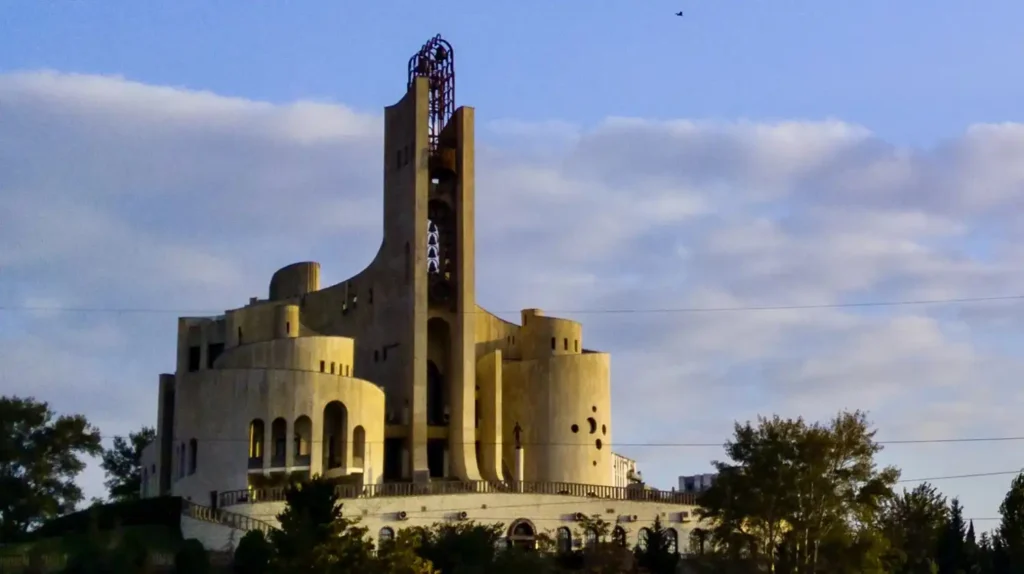
Celebrating Life Through Concrete
The Palace of Ceremonies represents a unique application of brutalist principles to celebratory architecture. This structure was designed to host weddings, cultural events, and other significant social gatherings, demonstrating how Soviet architects adapted the brutalist style for more joyful purposes.
Unlike many brutalist buildings that emphasize institutional or administrative functions, the Palace of Ceremonies showcases how raw concrete and bold geometric forms can create spaces for celebration and community gathering. Its design balances monumentality with welcoming functionality.
What Sets This Building Apart
The Palace of Ceremonies offers distinctive qualities that make it architecturally significant:
- Celebratory function showing brutalism’s adaptability to social purposes
- Welcoming design elements that soften the typically austere brutalist aesthetic
- Community significance as a gathering place for important life events
- Architectural innovation in adapting concrete construction for ceremonial uses
- Cultural importance representing Soviet ideals about community and celebration
The Enduring Appeal of Soviet Brutalism
These five remarkable buildings demonstrate why Soviet brutalist architecture continues to captivate architects, historians, and travelers alike. Each structure tells a unique story about the ambitions, ideals, and creative vision that shaped the built environment during this pivotal period in architectural history.

